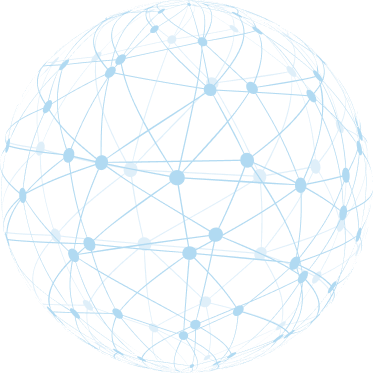Marcus had always been confident—on paper, at least. His team respected him, his results were solid, and his executive presence checked every box. But in coaching sessions, there was a strange tension. He said he was open to change, but something in his posture, his tone, his energy suggested otherwise.
Then one day, we used neurofeedback. Just a small wearable on his head and a live brainwave readout on the screen between us.
And that’s when the real work began.
The Missing Link: What We Say vs. What the Brain Does
In coaching, we often rely on words, observations, and gut instinct. We ask questions, read between the lines, track patterns in behavior. But sometimes, what a client says doesn’t match what’s happening internally. That’s not deception—it’s self-protection, or simply lack of awareness.
Neurofeedback bridges that gap.
It gives coaches and clients real-time data on brain activity, allowing both parties to see—literally—how the brain responds to stress, focus, feedback, or emotion in the moment.
What once took weeks to uncover through dialogue can now surface in seconds. And when someone sees their own brain in action? They can’t unsee it. That awareness is powerful.
What Is Neurofeedback, Exactly?
Neurofeedback is a method that uses EEG technology to monitor brainwave patterns and provide instant feedback about mental states. It’s been used in clinical settings for decades to treat anxiety, ADHD, and trauma.
But now, it’s entering the coaching space—not as therapy, but as a tool to increase awareness, regulation, and performance.
Here’s how it works:
- A wearable device reads brainwave activity.
- The data is translated into visual or auditory feedback (like graphs or sounds).
- The client sees their brain state change in real time during reflection, conversation, or stress triggers.
It’s not a diagnosis. It’s a mirror.
The Neuroscience Behind Why It Works
When people receive real-time information about their brain, it activates several key systems:
- Anterior cingulate cortex (ACC): Helps detect discrepancies between intention and action. Seeing misalignment sparks internal correction.
- Prefrontal cortex: Engaged when learning new strategies for focus, self-control, or reframing thoughts.
- Insular cortex: Plays a role in self-awareness. Watching your own brain increases interoception (the sense of what’s happening inside).
The result? A coaching experience that’s no longer theoretical—it’s experiential, embodied, and neurologically reinforced.
Back to Marcus: Real-Time Breakthrough
During one session, I asked Marcus a question he’d heard before:
“What’s one thing your team needs from you that you’ve been avoiding?”
He paused. Said he didn’t know. Seemed calm. But the brainwave data spiked—his alpha and beta rhythms suddenly shifted. The visual dashboard lit up.
I gently pointed to the screen and asked, “What’s happening for you right now?”
That’s when the real answer came.
He admitted he’d been putting off a difficult conversation for weeks—afraid of seeming weak. The data didn’t confront him; it invited him inward. He got curious, not defensive.
From that point on, our coaching conversations changed. They were more honest, more grounded—and far more productive.
Practical Ways to Use Neurofeedback in Coaching
You don’t need to be a neuroscientist to integrate this tool into your practice. Here are a few ways to apply neurofeedback ethically and effectively:
1. Awareness of Triggers
Let clients see how their brain responds to tough questions, feedback, or silence.
💬 Prompt: “Notice what’s happening in your body as you respond. Let’s look at what your brain’s saying too.”
2. Tracking Progress Over Time
Use neurofeedback over multiple sessions to track changes in focus, emotional regulation, or stress response.
💬 Prompt: “Compare this to how your brain responded last month. What’s shifted in you since then?”
3. Reinforcing Calm States
Guide clients into mindfulness or breathing practices and show them the neurological evidence of those shifts.
💬 Prompt: “Let’s take 60 seconds to reset. Now look at how your brain just responded to that breath.”
4. Reframing Limiting Beliefs
When a client expresses a negative belief (“I’m not a good leader”), ask them to restate it differently—and observe how their brain reacts to each version.
💬 Prompt: “Try saying, ‘I’m learning to lead in new ways.’ See how your brain settles?”
A Note on Ethics and Boundaries
Neurofeedback is a powerful tool—but it’s not for diagnosing or treating clinical conditions unless you’re qualified to do so. In coaching, it’s best used to enhance self-awareness, not to pathologize behavior.
Always:
- Get clear, informed consent.
- Use simple language to explain what the tech is and isn’t.
- Frame it as an invitation, not an assessment.
Final Thought: Insight Isn’t Always Verbal
Some of the deepest coaching breakthroughs don’t come from the perfect question or the boldest challenge.
They come from a moment of stillness—when a client sees something in themselves they hadn’t seen before. Neurofeedback helps create more of those moments.
It doesn’t replace the art of coaching.
It sharpens it.
So if you’re ready to move beyond the surface, into the space where insight becomes felt, and transformation becomes measurable—
you might just find that the brain itself has something to say.





